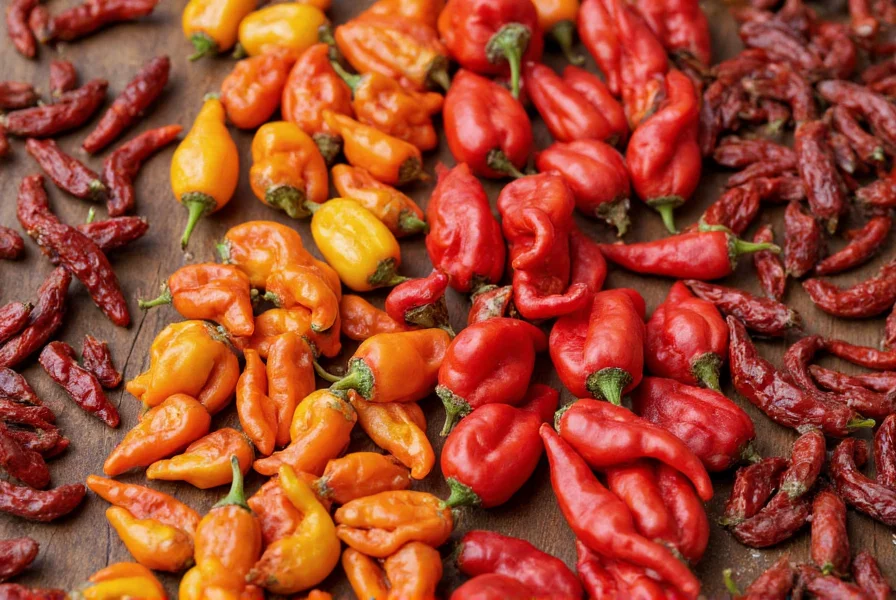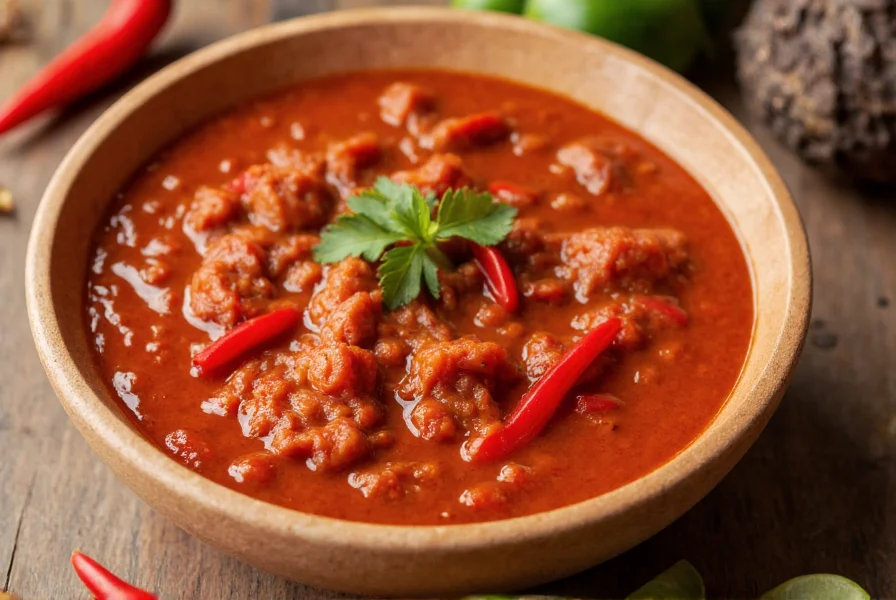Understanding the distinction between \"chile\" and \"chili\" unlocks a world of culinary knowledge. This confusion stems from linguistic evolution as Spanish terms entered English usage. In Mexico and most Spanish-speaking countries, \"chile\" (with an \"e\") denotes the fresh or dried pepper, while \"chili\" (with an \"i\") in English often refers to the meat-based stew or the powdered spice blend.
Chile vs. Chili: Clearing the Confusion
The Nahuatl word \"chīlli\" entered Spanish as \"chile,\" maintaining its \"e\" ending. When adopted into English, spelling variations emerged, with \"chili\" becoming standard in American English. This linguistic divergence explains why you won't find \"el chili\" on authentic Mexican menus—it's always \"el chile.\"
| Term | Language | Correct Usage | Common Misuse |
|---|---|---|---|
| Chile | Spanish | El chile verde (green pepper) | El chili |
| Chili | English | Beef chili stew | Chili con carne in Spanish contexts |
| Chilli | British English | Chilli powder | Rarely used in American English |
Major Chile Varieties and Their Heat Levels
Understanding authentic chile varieties helps navigate menus and recipes correctly. The Scoville scale measures capsaicin concentration, determining heat intensity. Here are common varieties you'll encounter in traditional preparations:
| Chile Name | Scoville Units | Flavor Profile | Common Uses |
|---|---|---|---|
| Poblano | 1,000-2,000 | Earthy, mild heat | Chiles rellenos, mole |
| Jalapeño | 2,500-8,000 | Grassy, bright heat | Salsas, pickled preparations |
| Habanero | 100,000-350,000 | Fruity, floral, intense heat | Yucatecan dishes, hot sauces |
| Guajillo | 2,500-5,000 | Berry-like, tangy | Red mole, marinades |
Culinary Applications of Authentic Chile Preparation
Traditional Mexican cooking treats chiles as essential ingredients rather than mere heat sources. Proper preparation techniques transform their flavor profiles significantly:
Roasting fresh chiles like poblanos over open flame develops complex caramelized notes while loosening the skin for removal. Dried chiles require rehydration—typically toasted lightly in a dry skillet first to awaken essential oils—before being blended into sauces. This two-step process (toasting then rehydrating) is crucial for authentic mole and adobo preparations.
Understanding regional variations matters too. Northern Mexican cuisine favors larger, milder chiles like anchos in carne adovada, while Yucatecan cooking incorporates habaneros with tropical fruits for balance. Central Mexican moles combine multiple chile varieties with chocolate, nuts, and spices for complex flavor layers.
Nutritional Benefits and Safety Considerations
Chiles offer significant health benefits beyond their flavor contribution. Capsaicin, the compound responsible for heat, has been studied for potential metabolic benefits and pain relief properties. A single serving of fresh chiles provides more than 100% of the recommended daily vitamin C intake and substantial vitamin A.
When handling extremely hot varieties like habaneros or ghost peppers, always wear gloves and avoid touching your face. The oils can remain active on surfaces for hours. If experiencing burning sensation, dairy products (not water) effectively neutralize capsaicin through casein binding.

Shopping and Storage Guidelines
Selecting quality chiles requires attention to specific characteristics. Fresh chiles should feel firm with smooth, unblemished skin. Dried chiles must be pliable rather than brittle, with rich color and aromatic scent when broken. Avoid any with signs of mold or excessive dryness.
Proper storage extends shelf life significantly. Fresh chiles keep 2-3 weeks in the refrigerator's crisper drawer. Dried chiles maintain optimal flavor for 6-12 months when stored in airtight containers away from light and moisture. For long-term preservation, freeze dried chiles or make roasted chile purees that freeze well for 6-12 months.

Authentic Chile-Forward Dishes to Explore
Exploring traditional preparations reveals chiles' culinary versatility beyond simple heat. Mole poblano demonstrates complex layering, combining multiple chile varieties with chocolate, spices, and nuts. Chiles en nogada features roasted poblano peppers filled with picadillo, topped with walnut cream sauce and pomegranate seeds—a dish celebrating Mexican independence.
For home cooking, start with approachable recipes like rajas con crema (sliced roasted poblanos in cream sauce) or salsa verde (tomatillo and serrano pepper sauce). These dishes showcase chiles as the star ingredient rather than just a heat source.
What's the correct term: chile or chili?
In Spanish, \"chile\" (with \"e\") refers to the pepper. \"Chili\" (with \"i\") is the English spelling typically used for both the pepper and the stew. \"El chili\" is incorrect Spanish—always use \"el chile\" when referring to the pepper in Spanish contexts.
Why do some recipes use 'chili' and others 'chile'?
The spelling variation reflects linguistic evolution. \"Chile\" maintains the original Spanish spelling, while \"chili\" represents the anglicized version. Regional cookbooks and authentic Mexican recipes typically use \"chile,\" while American cookbooks often use \"chili\" for both the pepper and dishes like chili con carne.
How can I reduce the heat of chiles without losing flavor?
Remove the seeds and white membranes (placenta) where most capsaicin concentrates. Roasting or blanching chiles also reduces heat while preserving flavor. For dried chiles, shorter toasting times and using less in blends maintains flavor with less heat. Combining with acidic ingredients like lime juice or tomatoes can balance perceived heat.
Are there nutritional differences between fresh and dried chiles?
Dried chiles concentrate certain compounds through dehydration, increasing capsaicin and some antioxidants per volume. Fresh chiles contain more vitamin C. Both forms provide significant vitamin A. The drying process develops additional flavor compounds through enzymatic changes, creating more complex flavor profiles in dried varieties.
What's the best way to store fresh chiles?
Store fresh chiles in the refrigerator's crisper drawer in a paper bag or perforated plastic container. Avoid airtight containers which trap moisture and accelerate spoilage. For longer storage, roast and freeze chiles in vacuum-sealed bags for up to 12 months. Never store fresh chiles at room temperature for extended periods.
Frequently Asked Questions
What's the correct term: chile or chili?
In Spanish, \"chile\" (with \"e\") refers to the pepper. \"Chili\" (with \"i\") is the English spelling typically used for both the pepper and the stew. \"El chili\" is incorrect Spanish—always use \"el chile\" when referring to the pepper in Spanish contexts.
Why do some recipes use 'chili' and others 'chile'?
The spelling variation reflects linguistic evolution. \"Chile\" maintains the original Spanish spelling, while \"chili\" represents the anglicized version. Regional cookbooks and authentic Mexican recipes typically use \"chile,\" while American cookbooks often use \"chili\" for both the pepper and dishes like chili con carne.
How can I reduce the heat of chiles without losing flavor?
Remove the seeds and white membranes (placenta) where most capsaicin concentrates. Roasting or blanching chiles also reduces heat while preserving flavor. For dried chiles, shorter toasting times and using less in blends maintains flavor with less heat. Combining with acidic ingredients like lime juice or tomatoes can balance perceived heat.
Are there nutritional differences between fresh and dried chiles?
Dried chiles concentrate certain compounds through dehydration, increasing capsaicin and some antioxidants per volume. Fresh chiles contain more vitamin C. Both forms provide significant vitamin A. The drying process develops additional flavor compounds through enzymatic changes, creating more complex flavor profiles in dried varieties.
What's the best way to store fresh chiles?
Store fresh chiles in the refrigerator's crisper drawer in a paper bag or perforated plastic container. Avoid airtight containers which trap moisture and accelerate spoilage. For longer storage, roast and freeze chiles in vacuum-sealed bags for up to 12 months. Never store fresh chiles at room temperature for extended periods.











 浙公网安备
33010002000092号
浙公网安备
33010002000092号 浙B2-20120091-4
浙B2-20120091-4